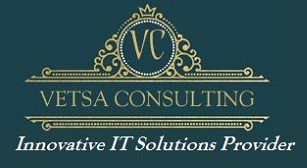Workload Automation:
We know that implementing a workload automation tool could streamline business processes and save time and costs. Challenge as well as critical success factor is, which product to choose?
Few important considerations:
- The job scheduler should be easy to use for everyone who operates it.
- Should support complex dependencies without significant extra work for the team.
- Obviously, it should give the best ROI, within the “budget”.
Also, it’s important to evaluate whether the enterprise needs a scheduler at all?
Key indicators to consider:
- Manually managing multiple systems / Multiple applications
- Regulatory/ compliance audit or reporting requirements not being met
- Missed SLAs
- Downtime caused by delays or errors
- scheduling dependent on knowledge of one or few individuals
- Unavailability of a common interface for managing processes
- People performing huge efforts of monitoring and scheduling manually
Managing schedules and dependencies across multiple number of systems and applications across enterprise can consume huge amount of time of an administrator and development resources. It would be useful to have a view of the manual work being done by each person and associated manpower cost to the company. It helps evaluate the potential ROI later, when potential solutions for improvement are evaluated.
Next step is, list out all the requirements by business and function. The list should then be analysed and categorised into “Must to have” requirements, “nice to have”, and perhaps “optional to have” requirements.
An enterprise scheduler system with “must to have” capabilities of automating and monitoring & tracking of completion of jobs (or events or blocks of work planned) will lead to benefits instantly by improving efficiency.
Operations:
Need is to to determine any requirements for operations. The operations should support the business ensuring the works or jobs are done on time as per plan i.e. appropriate SLAs are met. Reliability of those outcomes are key.
Budgets:
It is obviously a must to plan and meet the budget requirements for the change drive. The costs that should be budgeted may include costs for any (new) software, Hardware, infrastructure, ongoing support and maintenance, training (initial & ongoing, if any), people costs et al.
Finally, I would recommend evaluating 2-3 vendor options against the business requirements and obtain the costs in terms of one-off fixed costs and any ongoing costs. These costs along with potential savings from process changes and removals shall be compared to calculate potential ROI for the business from the changes. Also the enterprise needs to be pragmatic with potential ROI because it could be a combination of qualitative (improving experience of customers, employees etc) as well as quantitative (hard savings, faster revenue generation etc).
Happy Times!
